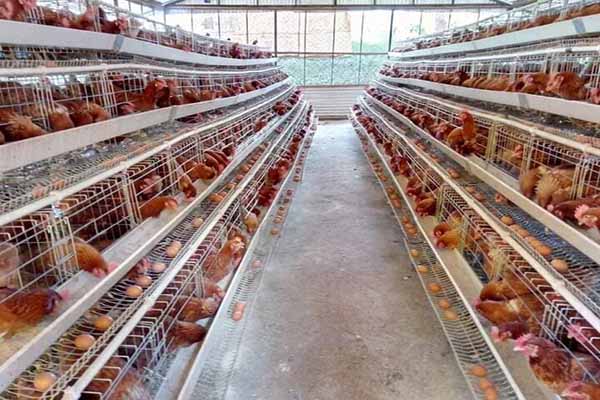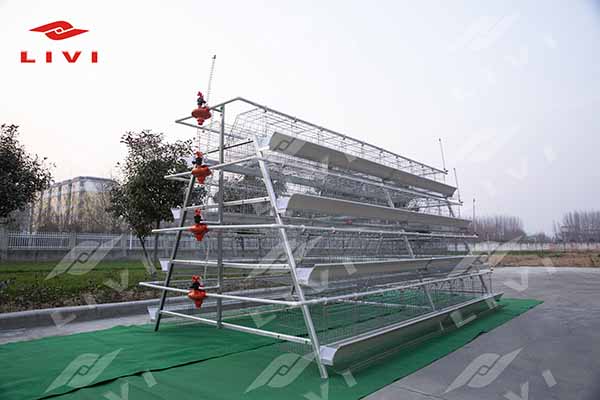How to Reduce Mortality in Kenyan Chicken Farms
Time : 2025-04-25
Keeping chickens on a farm is a lucrative business, especially in Kenya where the poultry industry is rapidly growing. However, one of the biggest challenges that chicken farmers face is the high mortality rate among their birds. This can be devastating for your business and can lead to financial loss. In this article, we will explore practical and professional ways to reduce mortality in Kenyan chicken farms, ensuring your flock stays healthy and productive.
Understanding the Causes of Mortality
Before we dive into the solutions, it’s essential to understand the common causes of mortality in chicken farms. These include:
- Infectious Diseases: Avian influenza, Newcastle disease, and fowl pest are some of the most common diseases that can spread quickly and cause high mortality rates.
- Poor Management: Inadequate feeding, lack of clean water, and unsanitary conditions can weaken chickens and make them susceptible to diseases.
- Environmental Factors: Extreme temperatures, humidity, and ventilation issues can also contribute to the mortality rate.
- Flock Composition: An imbalanced flock composition, such as overcrowding, can lead to increased stress and disease transmission.
Implementing Best Practices for Disease Prevention
One of the most effective ways to reduce mortality in your Kenyan chicken farm is to focus on disease prevention. Here are some essential best practices:
Sanitation and Biosecurity
Maintaining a clean and hygienic environment is crucial. Regularly clean the coop, remove droppings, and dispose of waste properly. Use disinfectants to sanitize the coop and equipment, and implement a biosecurity plan to prevent the introduction of pathogens. This includes limiting access to the farm, ensuring visitors wear clean clothing, and using barriers to separate different sections of the flock.
Vaccination Programs
Develop and implement a vaccination program tailored to the diseases prevalent in your area. Consult with a veterinarian to create a vaccination schedule that protects your chickens from common diseases. Keep records of vaccinations to ensure proper timing and to identify any potential issues.

Feeding and Nutrition
Proper nutrition plays a vital role in the health and immune response of chickens. Provide a balanced diet that meets their nutritional needs, ensuring they have access to clean water at all times. Avoid feeding scraps or unbalanced feed, as this can lead to malnutrition and health issues.
Improving Environmental Conditions
The environment in which chickens are kept can significantly impact their health and mortality rate. Here are some tips to improve environmental conditions:
are kept can significantly impact their health and mortality rate. Here are some tips to improve environmental conditions:
Temperature and Humidity Control
Chickens are sensitive to temperature and humidity changes. Ensure your coop is well-ventilated and temperature-controlled, using fans, heat lamps, or other appropriate equipment to maintain optimal conditions.
Water Supply
Access to clean, fresh water is essential. Regularly check water lines for leaks and ensure that waterers are properly sanitized. Provide shade and water sources in hot weather to help chickens stay hydrated.
Space and Flock Composition
Adequate space is crucial for reducing stress and preventing disease transmission. Avoid overcrowding and consider the age, sex, and breed of your chickens when designing your flock composition. Regularly assess the flock’s health and remove any sick birds promptly.
Regular Health Monitoring and Veterinary Care
Monitoring the health of your chickens is vital for early detection and treatment of diseases. Here’s how to maintain a healthy flock:
Weekly Health Checks
Conduct reg ular health checks to identify any signs of illness or stress. Look for symptoms such as changes in feather quality, lack of appetite, and decreased activity. Early intervention can prevent the spread of diseases and reduce mortality.
ular health checks to identify any signs of illness or stress. Look for symptoms such as changes in feather quality, lack of appetite, and decreased activity. Early intervention can prevent the spread of diseases and reduce mortality.
Consult a Veterinarian
Work with a veterinarian to develop a health management plan tailored to your farm’s needs. Regular visits from a vet can help identify potential problems and provide guidance on disease prevention and treatment.
Conclusion
Reducing mortality in Kenyan chicken farms requires a comprehensive approach that focuses on disease prevention, environmental conditions, and regular health monitoring. By implementing these best practices, you can ensure a healthy, productive flock and a thriving poultry business. Remember, the key to success lies in proactive management and continuous improvement.











